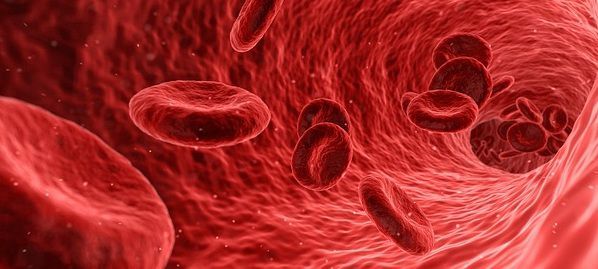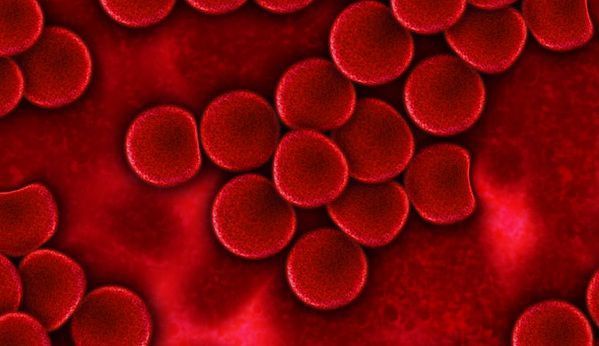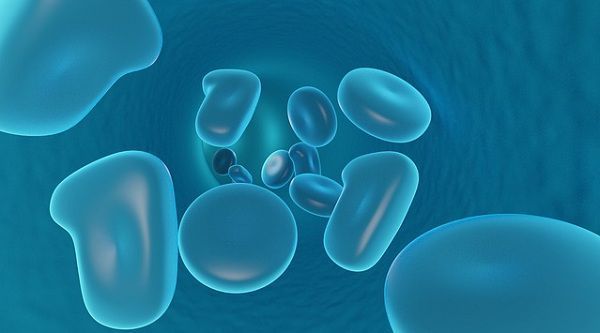RBC or Red blood cells play the vital role in carrying oxygen to the tissues of different parts of the body. Conversely WBC or White blood cells help in the defense mechanism of the body by creating antibodies. Secondly, RBC contains hemoglobin, which gives the red color to the blood and occupies around 45-50% of the total volume of the blood, while WBC is colorless, due to the absence of hemoglobin in them and comprises only 1% of the total volume of the blood.
Red blood cells, White blood cells, and Platelets accounts for the major portion of the blood. Together they make up more than 45% of the blood tissues; the plasma occupies the another 55%. Three main functions of the blood are protection, transportation, and regulation. They transport gases like oxygen, carbon dioxide, and provides nutrients to different parts of the body.
Blood also carries hormones from the gland where they are produced to the site where they are needed; it also regulates the body’s temperature. In this article, we will discuss the important difference between RBC and WBC.
Content: Red Blood Cells (RBC) Vs White Blood Cells (WBC)
Comparison Chart
| Basis for Comparison | Red blood cells (RBC) | White blood cells (WBC) |
|---|---|---|
| Physical appearance | Red blood cells (RBC) also known as Erythrocytes, are bi-concave disc shaped, anucleated, size is roughly 6-8 micron. | White blood cells (WBC) also known as Leukocytes, are irregular in shape, nucleated, size is 15 micron. |
| Production | Produced in red bone marrow. | Produced in lymph node, spleen, etc. |
| 2 million RBC per second. | They are produced comparatively less in numbers than RBC. | |
| Number | 5 million RBC in every cubic mm of blood. | 3000-7000 WBC in every cubic mm of blood. |
| Formation | Erythropoiesis is the term used for the RBC formation. | Leucopoiesis is the term used for the WBC formation. |
| Presence in blood | RBC are accounted for 36%-50% of the total blood present in the body, depending on the weight, height and sex. | WBC account for the 1% of the total blood in the body. |
| Motility | RBC are non-motile. | WBC are motile. |
| Life span | RBC live for only 120 days. | WBC can live for several days to years in a healthy body. |
| Types | There is one type of RBC. | Neutrophils, T-lymphocytes, B-lymphocytes (plasma cell), monocytes (macrophages), eosinophils, basophils are various types of WBC. |
| Components | It contains hemoglobin only. | It has antibodies with MHC antigen cell markers. |
| Hemoglobin | As the name says, they are rich in hemoglobin due to which they are red. | Due to the absence of hemoglobin, they appear to be colorless. |
| Circulatory System | Cardiovascular system (related to heart and blood vessels). | Lymphatic and Cardiovascular system. |
| Functions | It carries oxygen and carbon dioxide and other waste products. But primary function is to transfer oxygen. | It defends body from the germs attack, so WBC works in producing antibodies to develop immunity against infection, and some may be phagocytic also. |
| Ill effects | Very low count will result in anemia (which reduces the body's ability to supply oxygen to tissues). | Very low count result in leukopenia (can compromise the immune system). |
| Number increase at high altitudes and during exercises. | A high count of WBC signifies infection in the body. |
Definition of Red Blood Cells (RBC)
The blood cells that carry oxygen to different parts of the body is called as RBC. Red blood cells (RBC) also known as erythrocytes provides red color to the blood as it contains hemoglobin iron-rich protein which binds with oxygen and is red. RBC are round, small and biconcave in shape in mature human, though it appears to be bell shape when it passes through the small vessels due to the flexibility of the cell.
RBC is covered by a membrane composed of proteins and lipids, and they are anucleated (does not have the nucleus). The cells lack other organelles too, to provide maximum space for the hemoglobin. RBC is developed in bone marrow (inside the bones) which are produced at the rate 2.4 million in just one second in normal human adults. These new erythrocytes circulate for around 120 days in the body, and after that, the process of macrophages recycles their components. Red blood cells encompass around 36%-50% of the total blood of the body.
The principal function of RBC is to carry oxygen from the gills or lungs to the body’s tissue with the blood flow through the circulatory system.It also carries carbon dioxide and other waste product to the lungs, from where they are excreted. The biconcave shape of the cells allows the exchange of the oxygen over the maximum possible area at a constant rate.
Lack of iron or vitamins in the diet may result in the problems related with the RBC, though some are also inherited. Erythrocyte count is the test performed by the health care professionals to check the number of RBC in the blood. Illness or diseases related to RBC are anemia-which can be of many kinds, and in this case counting of number RBC get decline and due to which the supply of oxygen is also insufficient throughout the body. In this case, the shape of the RBC becomes irregular. The different types of anemia include sickle-cell anemia, iron-deficiency anemia, normocytic anemia, hemolytic anemia and fan-conic anemia.
Irregular heartbeats, pale skin, tiredness, feeling cold, joint pain, are the common symptoms noticed in the person suffering from anemia.The food we eat should be rich in iron and vitamins to maintain the health and the counts of RBC in the blood. So the food like green vegetables, nuts, seeds, avocado, eggs, whole grains, bananas, orange, mango, etc. should be taken in the higher amount.
Definition of White Blood Cells (WBC)
White blood cells (WBC) or leucocytes or leukocytes or white corpuscles plays the significant role in protecting the body against any infectious agent. WBC lacks hemoglobin, and so they are colorless pigment. They are found in lymphatic as well as in circulatory system. They derived from the hematopoietic stem cells which are the multipotent cells of the bone marrow. WBC are present within the tissues and sometimes in the circulation also.
The cells are motile and contain a nucleus, which is absent in RBC. These cells protect the body by digesting the foreign materials and destroying the cancer cells, infecting agents or by producing the antibodies. Normally healthy human has 4,500-11,00 cells per cubic mm of blood.
Leukocytosis is the abnormal increase in the number of WBC while leukopenia is the abnormal decrease in WBC. When observed under the light microscope, white cells are classified as lymphocytes, granulocytes, and monocytes, and they perform different functions too. Lymphocytes are further divided into B cells and T cells.
Types of White blood cells
Neutrophils: They are the first line of defense when any infection occurs. They are most numerous type of white blood cells and can kill and digest fungi and bacteria.
Monocytes: Among all white blood cells, they have a longer life and also helps in breaking down the bacteria.
Lymphocytes: They produce antibodies and invade the virus, bacteria and other harmful microorganisms.
Basophils: These cells produce a chemical called histamine, they regulate the body’s immune system and also act as the marker in allergic disease and invade the infectious agents.
Eosinophils: They destroy the cancer cells, and kill parasites, also help in allergic responses.
The changes in the number of counts in WBC will result in different kinds of disease, as the low count of WBC may be due to less response of the bone marrow in the production of WBC or when any infecting agent destroying the cells more quickly than the body can restore them. As soon as the count of the WBC decline, the person gets susceptible to any infection or illness and result in a decline of the health.
Diseases which occur due to the low or high count of WBC are infections, cancer, myelodysplastic syndrome, weak immune system, myeloproliferative disorder, medicines. The common symptoms include stress can be physical or emotional, inflammation.
Key Difference Between Red Blood Cells (RBC) and White Blood Cells (WBC)
Coming points are the substantial differences between RBC and WBC:
- Red blood cells (RBC) also known as Erythrocytes are produced in red bone marrow, these are biconcave disc shaped, anucleated and size vary from 6-8 micron. On the other hand, White blood cells (WBC) also known as leucocytes are produced in lymph node, spleen, etc. These are irregular in shape, nucleated, and size is around 15 micron. RBC are produced around 2 million per second and WBC are produced comparatively less in number.
- A number of RBC present is 5 million in every cubic mm of blood, while in WBC it is 3000-7000 in every cubic mm of blood.
- Formation of RBC is called as Erythropoiesis, while Leucopoiesis is the term used for the WBC formation.
- Presence in blood accounts for 36%-50% of the total blood present in the body, depending on the weight, height and sex and WBC
account for the 1% of the total blood in the body. - RBC are nonmotile, and WBC is motile.
- The life span of RBC is only 120 days, but WBC can live for several days to years in a healthy body.
- Neutrophils, T-lymphocytes, B-lymphocytes (plasma cell), monocytes (macrophages), eosinophils, basophils are the types of WBC but
there is one type of RBC only. - RBC are rich in hemoglobin only due to which they are rich in color, on the contrary WBC have antibodies with MHC antigen cell markers,
and due to the absence of hemoglobin, they appear to be colorless. - The circulatory system involves in this is the cardiovascular system in RBC, while it is the lymphatic and cardiovascular system in WBC.
- Red blood cells (RBC) carries oxygen and carbon dioxide and other waste products, but the main function is to transfer oxygen to different parts of the body. White blood cells work to defend the body from the germs attack and mainly works in producing antibodies to develop immunity against infection where some may be phagocytic also.
- Very low count of RBC will result in anemia ( which reduces the body’s ability to supply oxygen to tissues), on the other hand very low count of WBC results in leukopenia (can compromise the immune system).
- The number increases at high altitudes and during exercises, whereas the high count of WBC signifies the infection in the body.
Conclusion
The Red blood cells count the important part of the blood, and it shows that how much effectively the tissues of the body receive the oxygen through these cells. The RBC count should never be too high or too low, but certain medical conditions, treatments and dietary habits can affect them. The White blood cells are also the essential part of the blood which helps in invading the infectious agent from the body. The WBC count also matters as the fluctuation in the number of either high or low will result in disturbance of the immune system.




Shehroz Mehar says
Thanks for this information good work bro thank u so much
Shehroz Mehar says
Sir Please write a detailed article on this question. How can I make my body healthy?